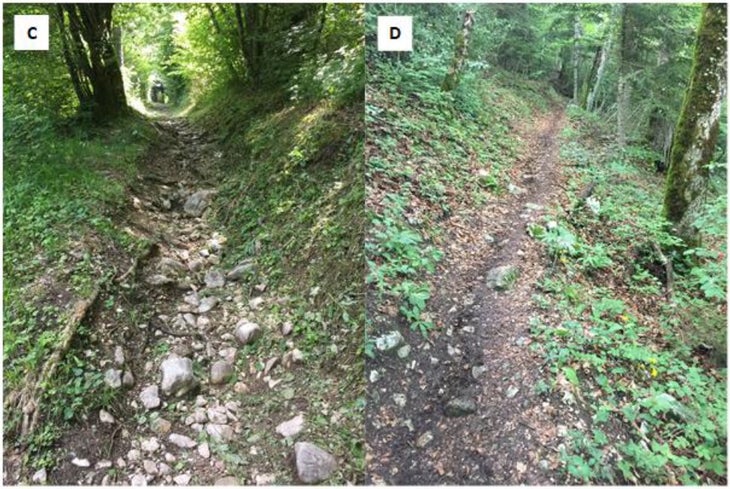Here’s How Much Extra Energy a Gnarly Trail Burns
4 min readHere’s a new term for the path working earth: technicity. In a recent analyze on uphill trail operating, the time period ground technicity refers to roots and rocks, sand and mud, slipperiness, unevenness, and all the other properties that distinguish an intriguing path from a basic previous street or monitor. It’s borrowed from the French phrase technicité, this means “technical quality or character,” and was very first made use of in English in a 1933 newspaper report paraphrasing a dispute in between two French socialist politicians. It is a bit awkward, but I can’t consider of any better options. Technicality, for instance, has a bunch of other connotations (like “loophole” or “meaningless detail”).
So, with the terminology settled, how does the technicity of a path have an impact on the way you run up it? That is what François Nicot of the Université Savoie Mont Blanc and his colleagues at several other universities in France set out to decide, publishing their benefits in the European Journal of Activity Science. They experienced 10 volunteers operate up two trails, a single with reduced technicity and the other with high technicity. Then they replicated people operates on a treadmill, matching the slope, distance, and pace in 100-meter (328-foot) increments, in purchase to determine out how their strides altered and how a lot added energy the technical trails burned.
Both equally trails were on the eastern side of Montagne-du-Chat, in the Savoie region of France. Each individual segment was about 1,000 meters very long (a small additional than 50 percent a mile), with fairly regular slopes to stay clear of unexpected jumps in hard work, and took about ten minutes to total. The very low technicity path climbed 190 meters (623 toes), and the substantial technicity trail climbed 200 meters (656 feet). In case your instinct for what constitutes lower and high technicity is a small rusty, below are images of the two (with higher technicity on the remaining):

So what is the big difference between jogging on clean vs . technical terrain? In conditions of biomechanics, the greatest just one is the total of facet-to-aspect motion. The magnitude and variability of facet-to-aspect foot accelerations a lot more than doubled on the trails in comparison to the treadmill, with similar boosts for both of those trails. Cadence (the range of methods for every moment) was a lot less impacted. On the very low technicity path, there was no considerable difference in comparison to the treadmill. On the large technicity trail, cadence was 4.6 % lower, presumably because the runners ended up sometimes stretching out their stride to get in excess of a root or rock.
The runners wore a heart-charge watch, a GPS enjoy, and a respiration mask related to a metabolic analyzer to evaluate their vitality expenditure. Not incredibly, oxygen intake (a proxy for strength) was increased on the trails than on the treadmill. But there wasn’t a significant difference involving the two technicities: the easy path burned 10.4 per cent extra electrical power than its treadmill analog, even though the hard path burned 11.4 per cent far more. The coronary heart amount values followed a comparable pattern.
In contrast (and incredibly), there was no clear difference involving treadmill and trails for perceived work. There are a handful of motives that the treadmill operates could possibly have felt just as tough even even though the physiological measurements advised they were a lot easier. A single is that treadmill running lacks the cooling airflow of overground functioning. But a easier a single, the scientists position out, is that most people discover functioning on a mountain path pretty pleasurable compared to slogging away on a treadmill in a lab. That pleasure change might have bled into the subjective ratings of effort and hard work.
Ultimately, the summary that specialized path running is more difficult than easy-surface area running won’t surprise everyone. Previous study experienced estimated that working on amount floor about simulated uneven terrain on a treadmill burned about five percent much more strength than smooth terrain. The new investigate indicates 10 per cent on uphill trails—but the big difference may perhaps have a lot more to do with the outdoor environment, which permits rougher terrain and more aspect-to-side movement than a treadmill, than with the uphill slope. These quantities begin to give us a sense of just how considerably slower we need to expect to run on rough trails—and they hint at the prospect of a courageous new world, many scientific studies into the future, the place popular routes and path races integrate a new term into their vocabulary and market their scientifically validated technicity score.
For far more Sweat Science, join me on Twitter and Fb, indicator up for the e-mail publication, and examine out my guide Endure: Intellect, Physique, and the Curiously Elastic Boundaries of Human Performance.





